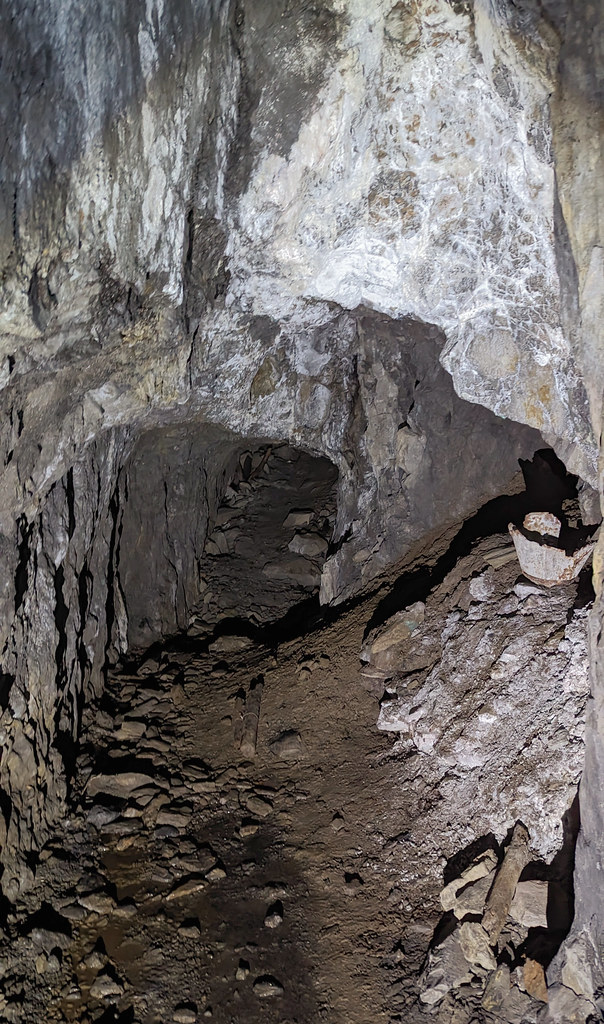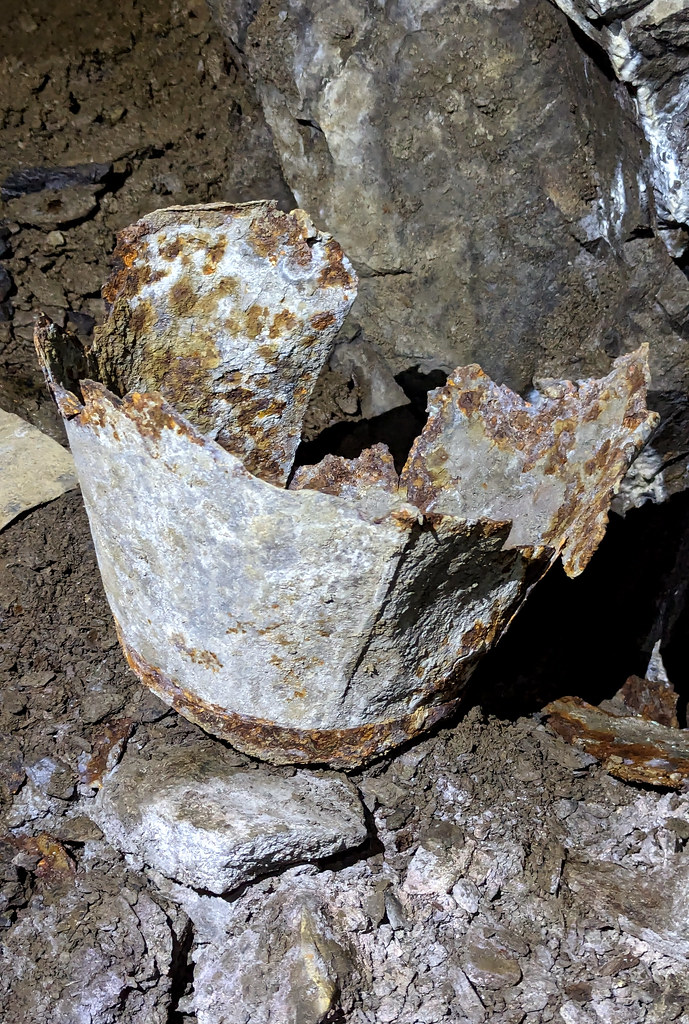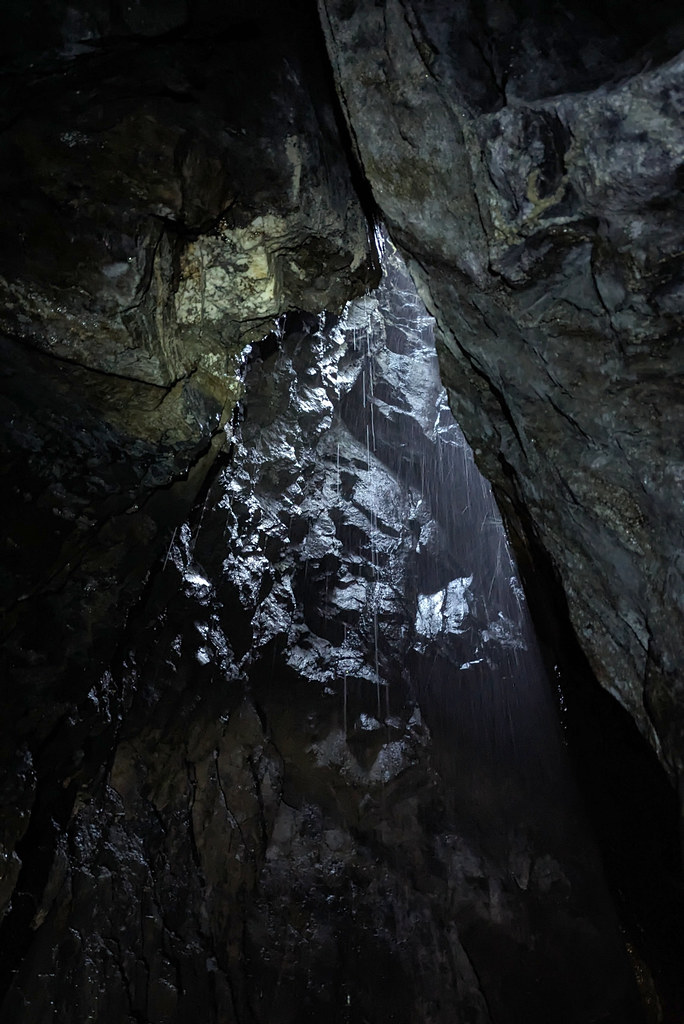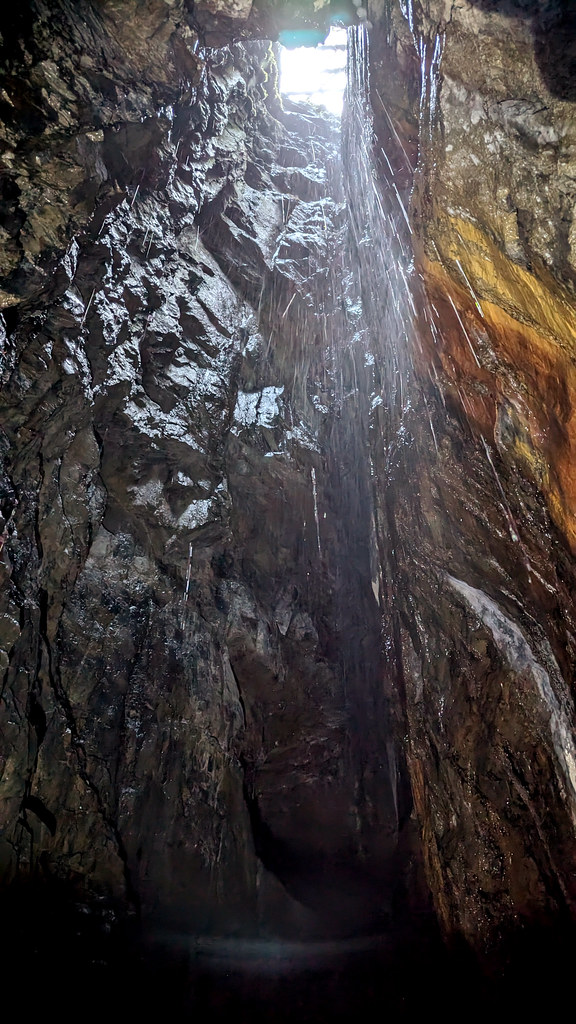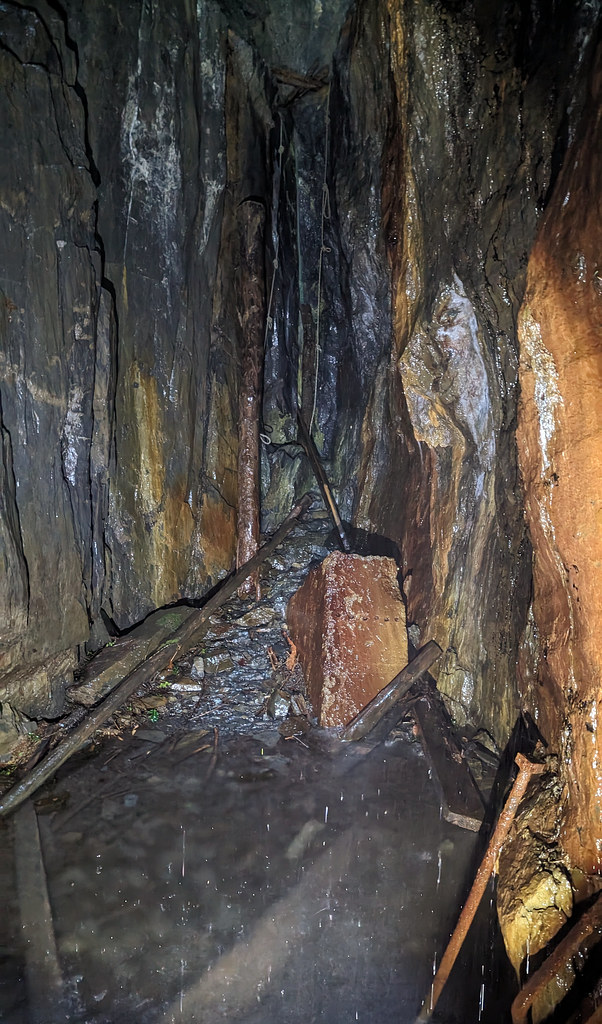- Joined
- Jan 6, 2013
- Messages
- 5,574
- Reaction score
- 11,213
1. The History
Ystrad Einion is a former lead-silver, zinc and copper mine, located 8 miles south/south-west of Machynlleth in the heart of Cwm Einion. Mining has taken place here since the 18th century. First worked in 1700 and again between 1745-60, the main period of activity was from 1851 when Lancastrian entrepreneur Adam Mason leased the land from the Pryses of Gogerddan, investing in over £3,000 in modern mining equipment. Records from 1891, make reference to 11 miners working at the site, 9 men labouring underground and 2 lads, aged between 13 and 18 above ground. It was an unprofitable mine, with the mine produced 5 tons of silver bearing lead (at a value of £37), 10 tons of zinc ore (£15) and 5 tons of copper ore (£7). Inevitably, the mine closed in 1903 and much of the machinery sold or scrapped.
Water was the main source of power using a leat running off from the River Einion 2km up stream. The wheel pits for three waterwheels survive, one wheel powered the pumps and winding drum at the main shaft head, another powered the stone breaker and crusher machinery in the crusher house, where lumps of ore bearing rock were reduced to a manageable size, and the third powered the jiggers and buddles which sorted and separated the metal ore. Other features of the site included waste tips, two stone ore bins, a blacksmiths shop, an ore store, an elaborate system of settling troughs and ponds to purify the poisonous wastewater, a gunpowder magazine set away from the other buildings and a series of tramways together with an incline that transported ore, waste and other materials around the site.
Below ground, there are four levels of workings, all accessed through adits cut in the hillside and linked by a number of shafts. A waterwheel which operated drainage pumps and a winding drum survives below ground.
Extract from a 1900 O/S map:
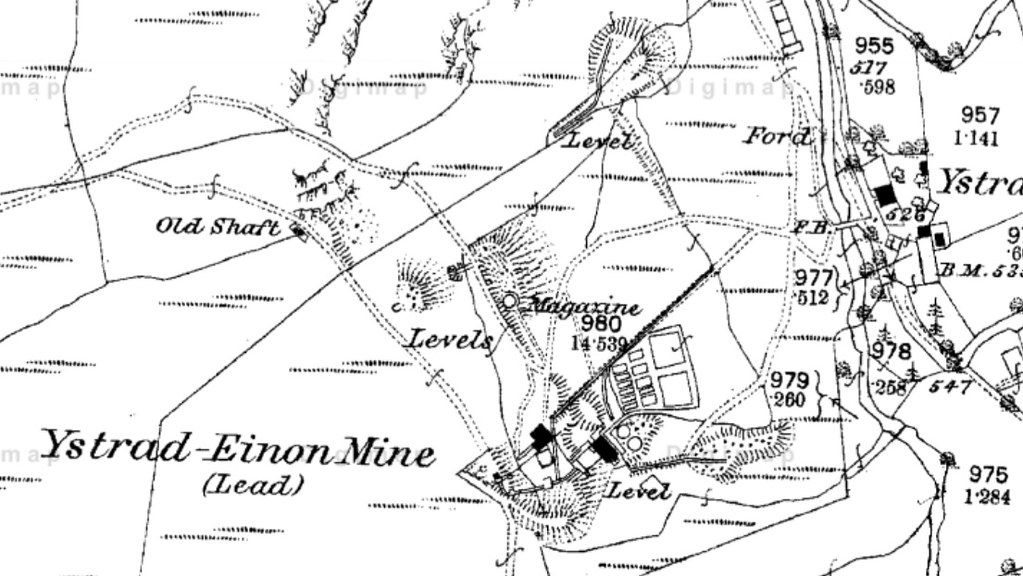
2. The Explore
Ever since seeing the picture of the legendary water wheel, I’ve wanted to visit this place. So when we ended up staying just up the road from here in Machynlleth, coming here was a no-brainer.
The workings are easily spotted due to the extensive above-ground remains. I didn’t have a definitive pin for the entrance so spent a little time looking for the adit. Once found and having ascertained it was below welly height, I ditched my waders and in I went. After the initial drive, you soon come to the water-wheel, It is a bit surreal. It really is one of the most amazing things I’ve seen down a mine. After that it was off to the right. Passed on the rope that takes you up a level and to the famous kibble. I then retraced my steps and went down the left hand drive, over makeshift pontoons, over a couple of collapses, ending up in a very wet engine shaft. At the far side a rope again took you up to the level up. After that, was back out and off to our rental cottage.
3. The Pictures
A few from the impressive above-ground remains first:
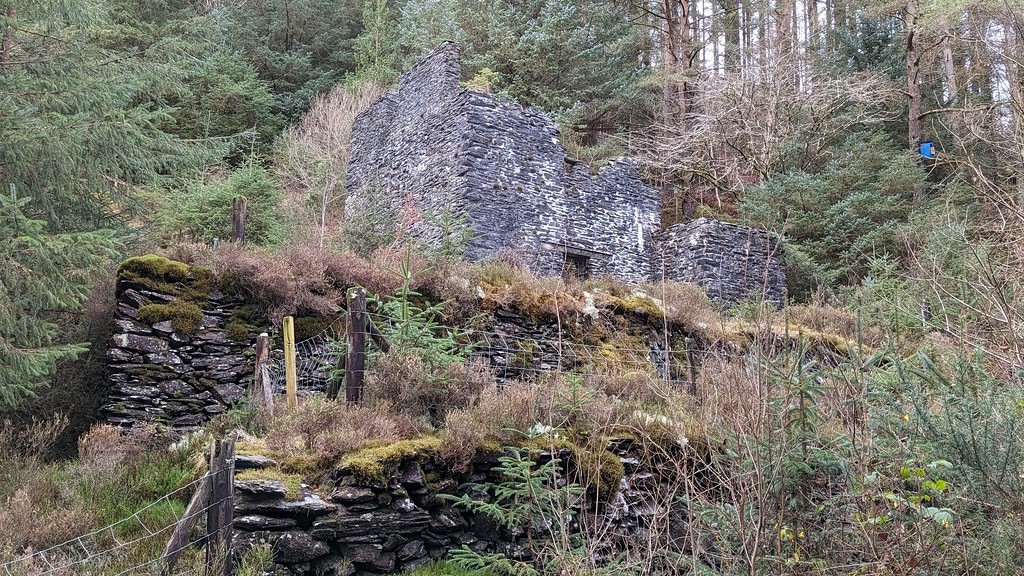
In we go:

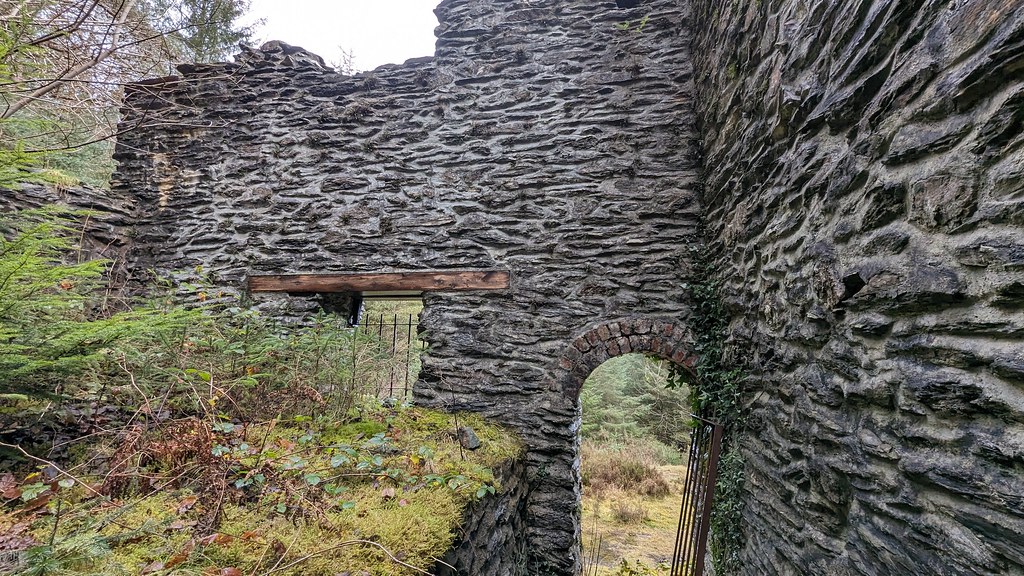
Not sure what this is:
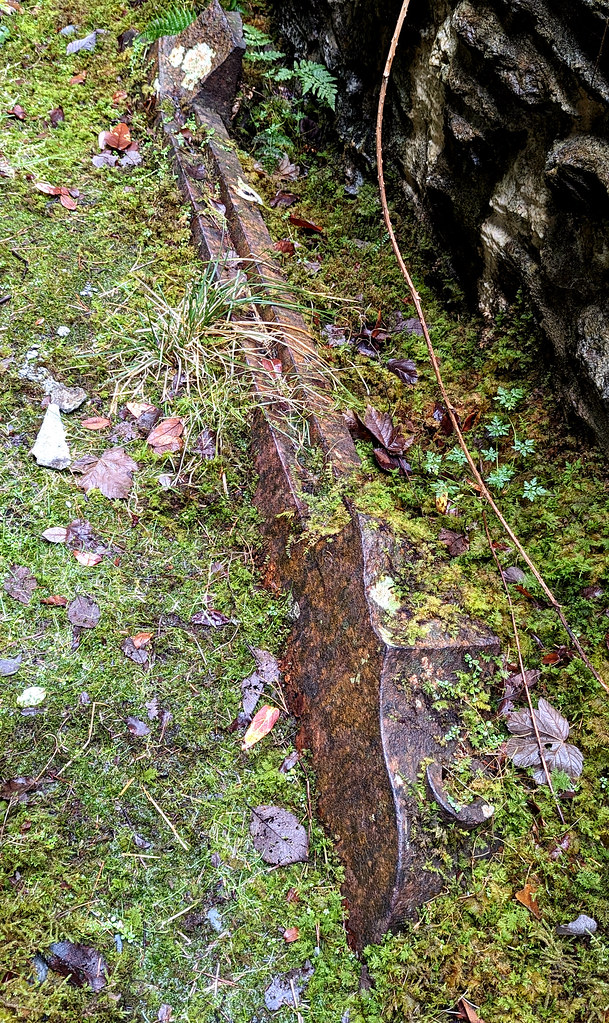
Is this a blocked-up adit:
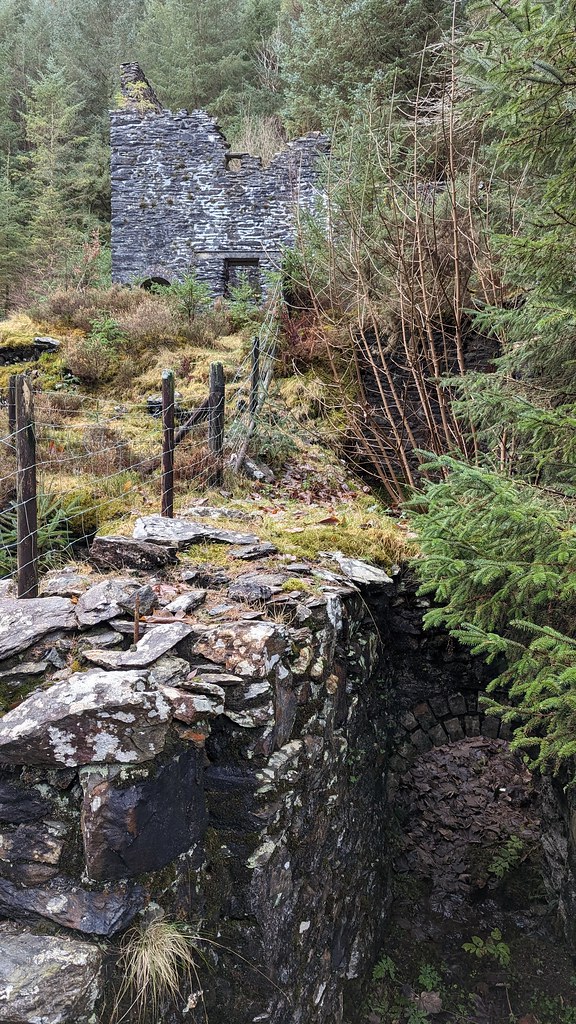
On to the adit:
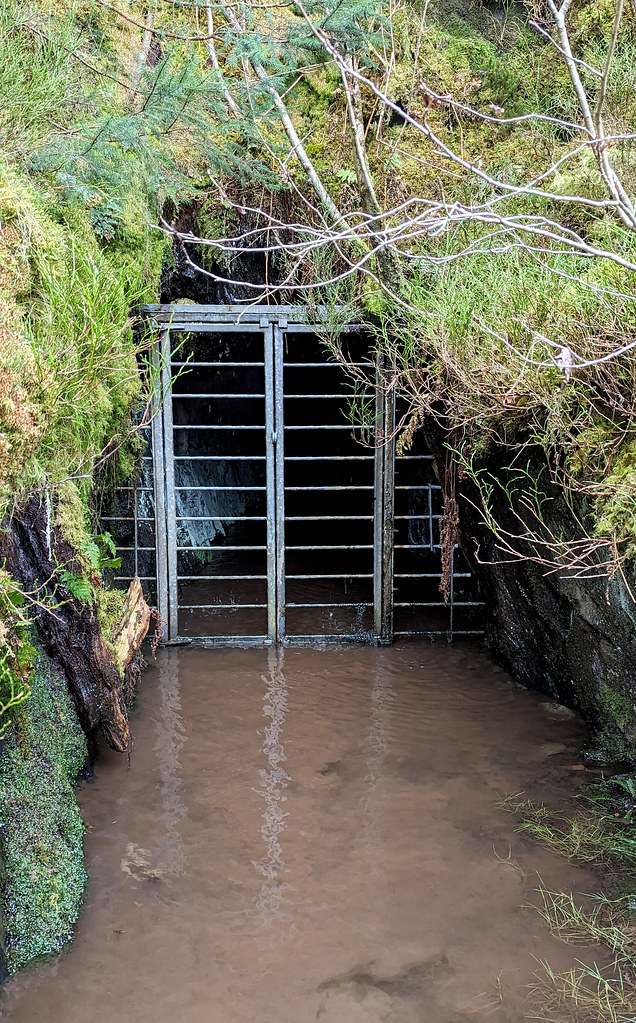
…and in we go:

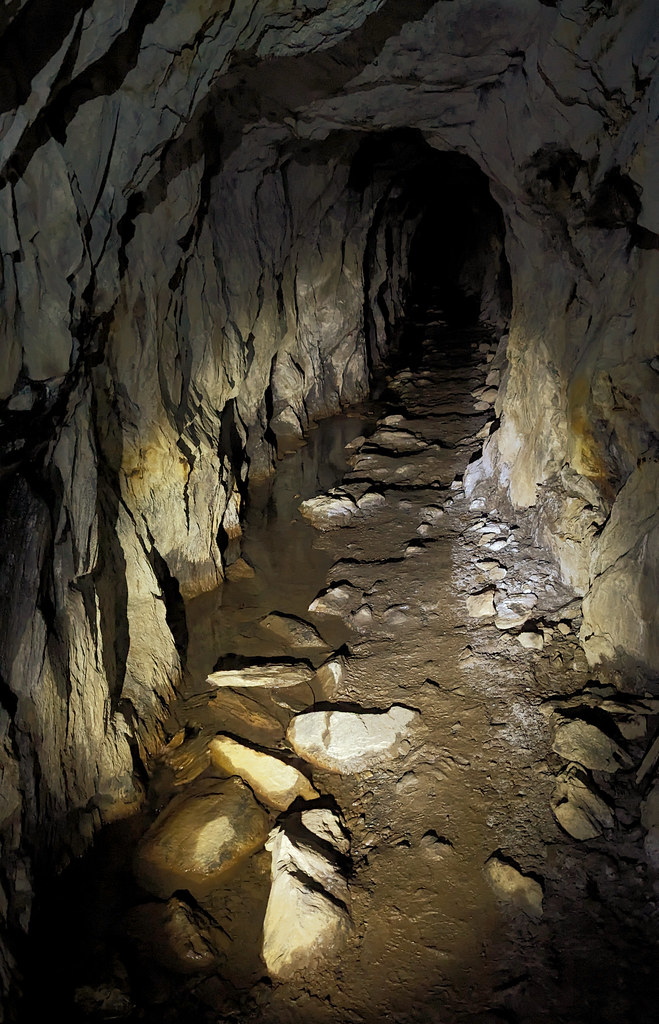
Some copper in the left-hand-side wall:
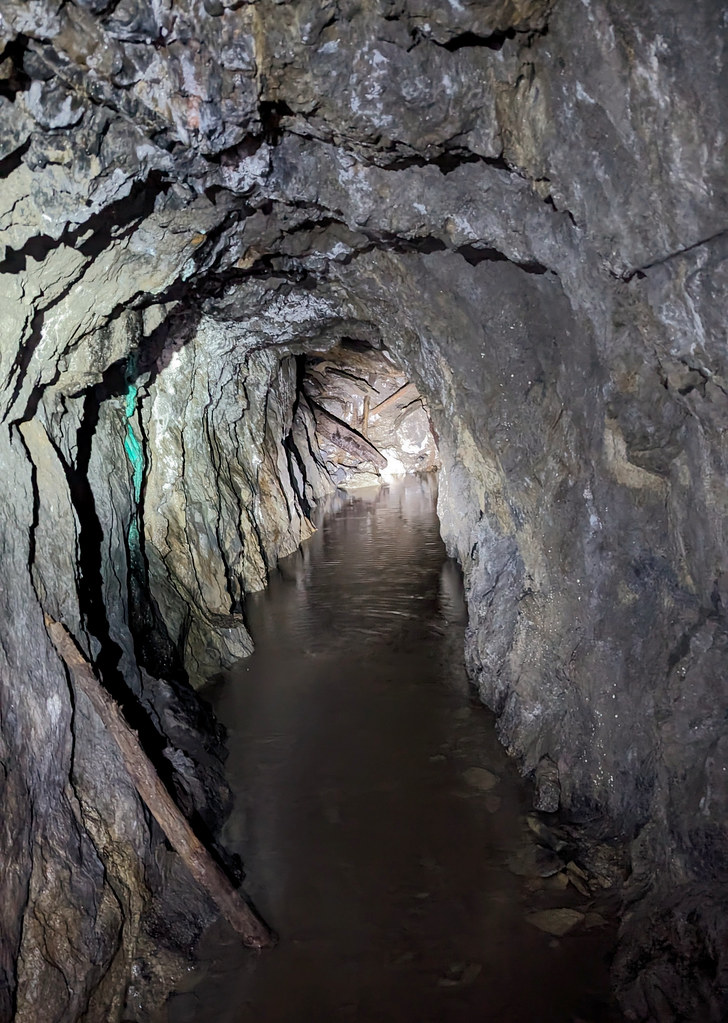
This really does take some beating:
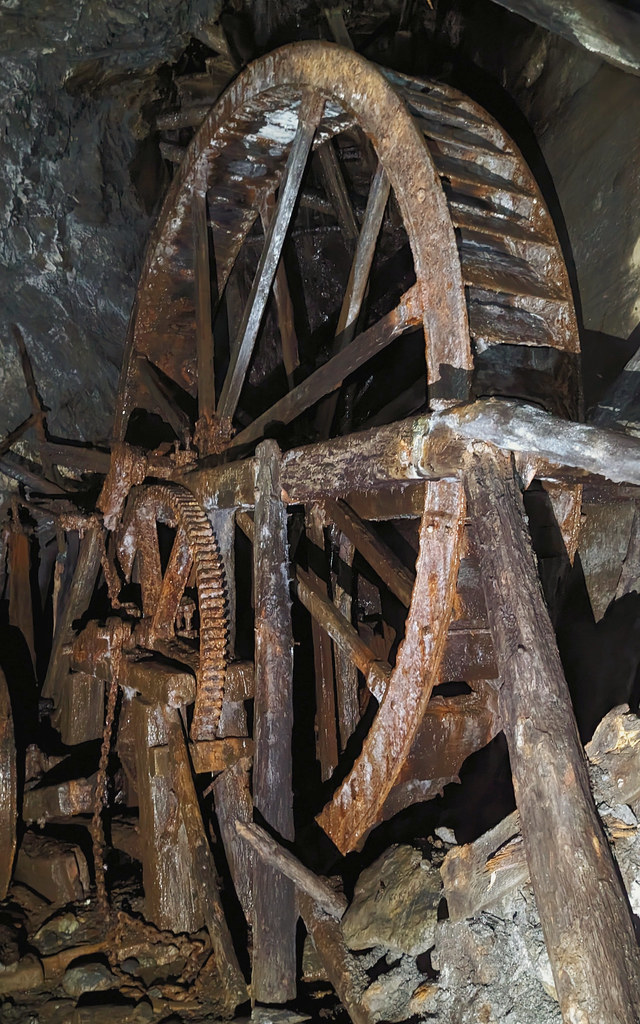
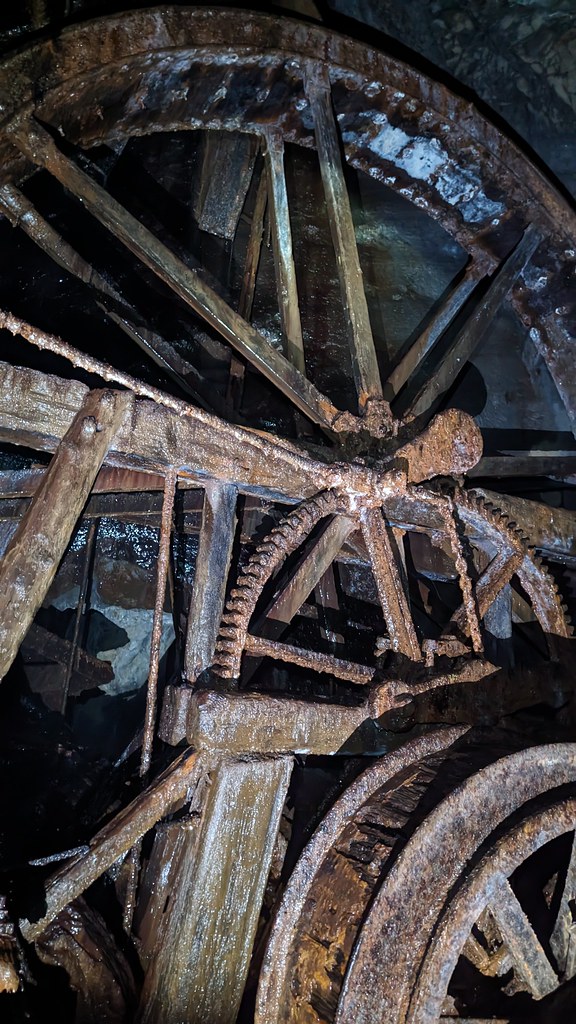
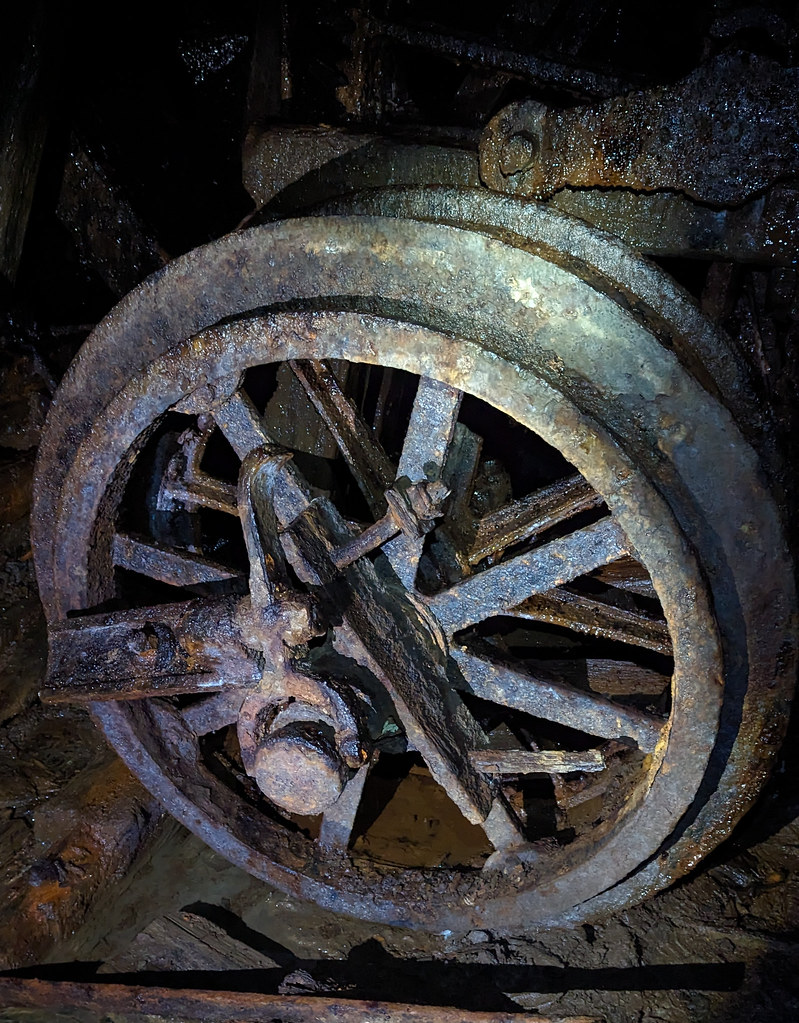
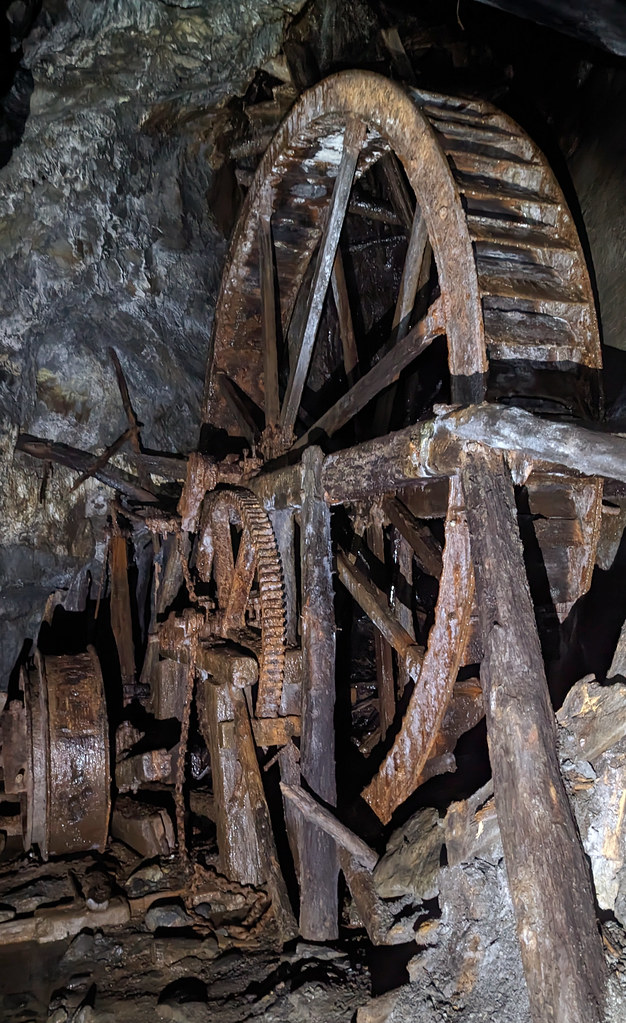
The pool of blue:
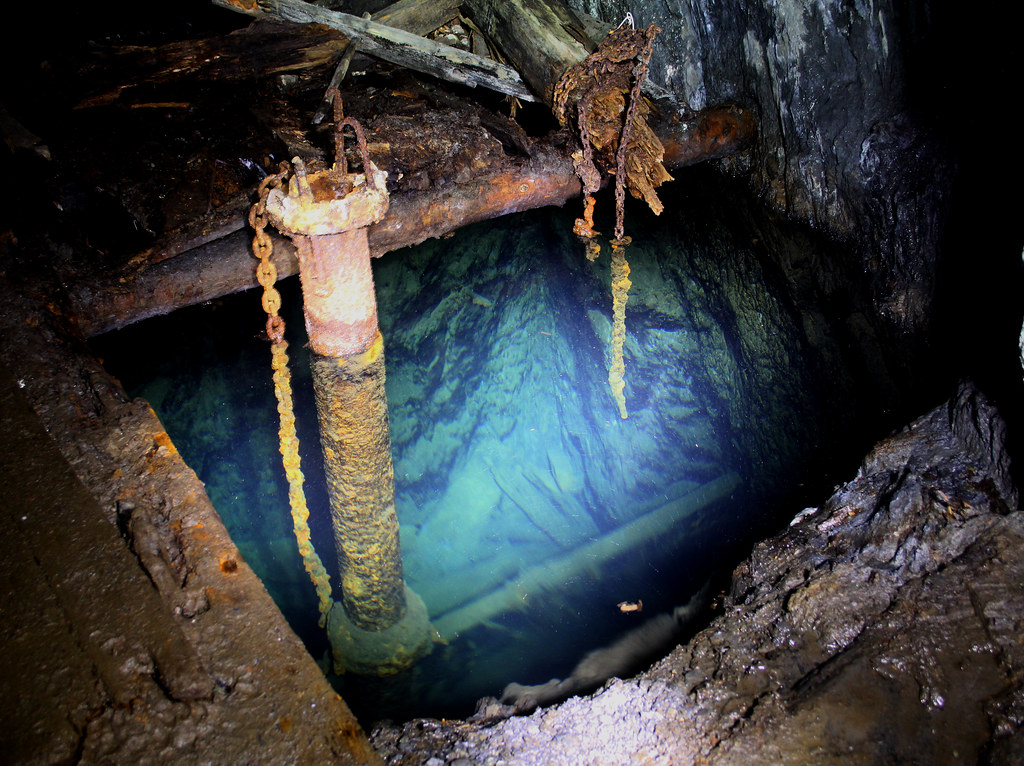
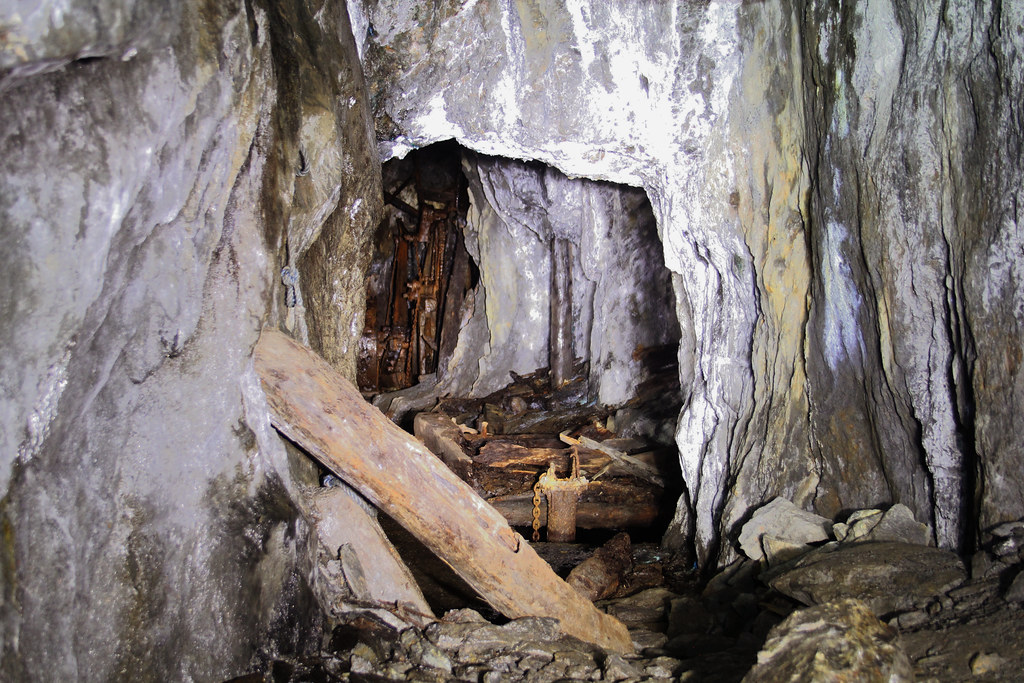
On we go:
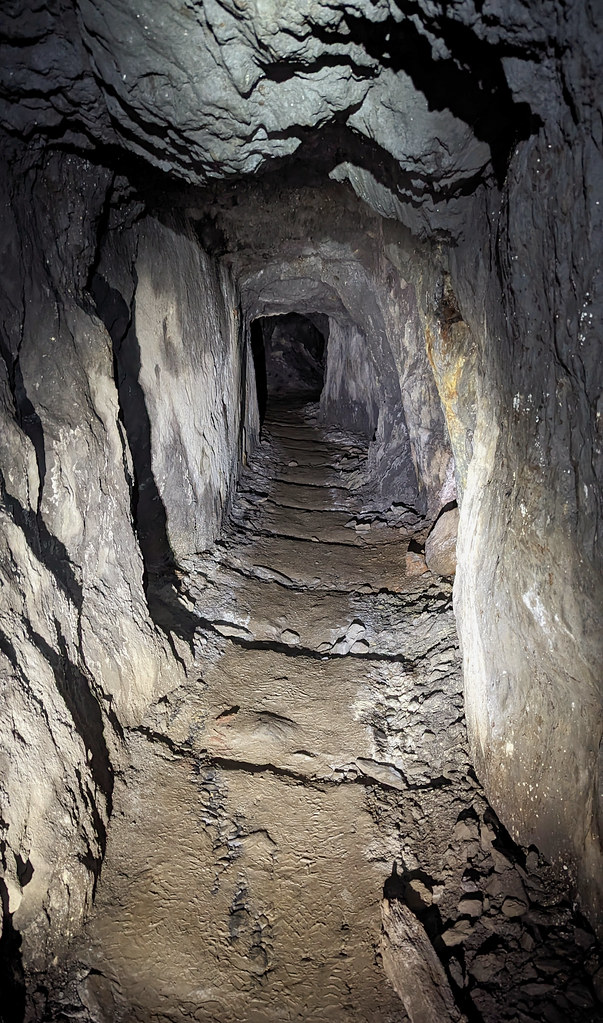
Rope up a level to the kibble:
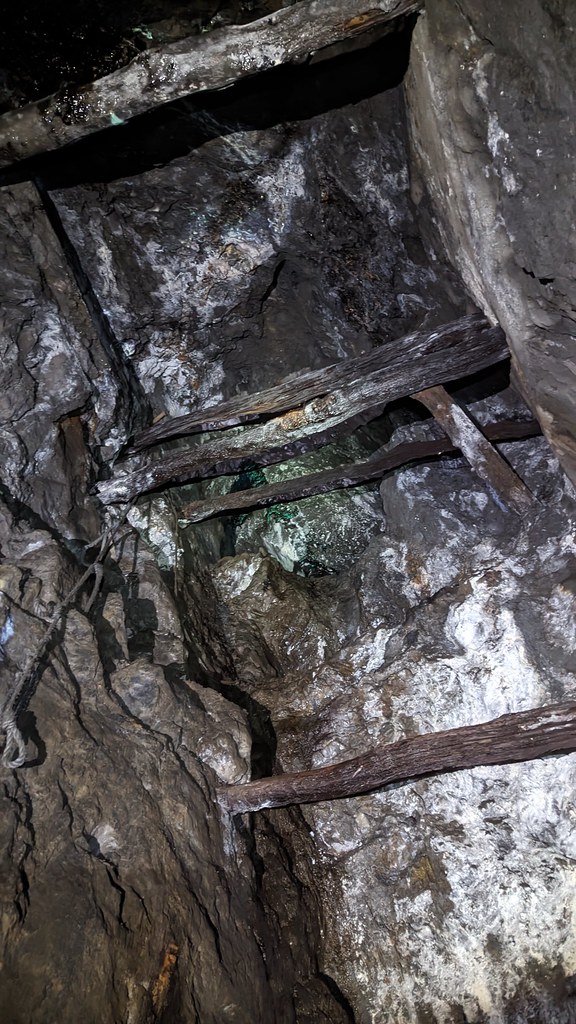

Pushing on:
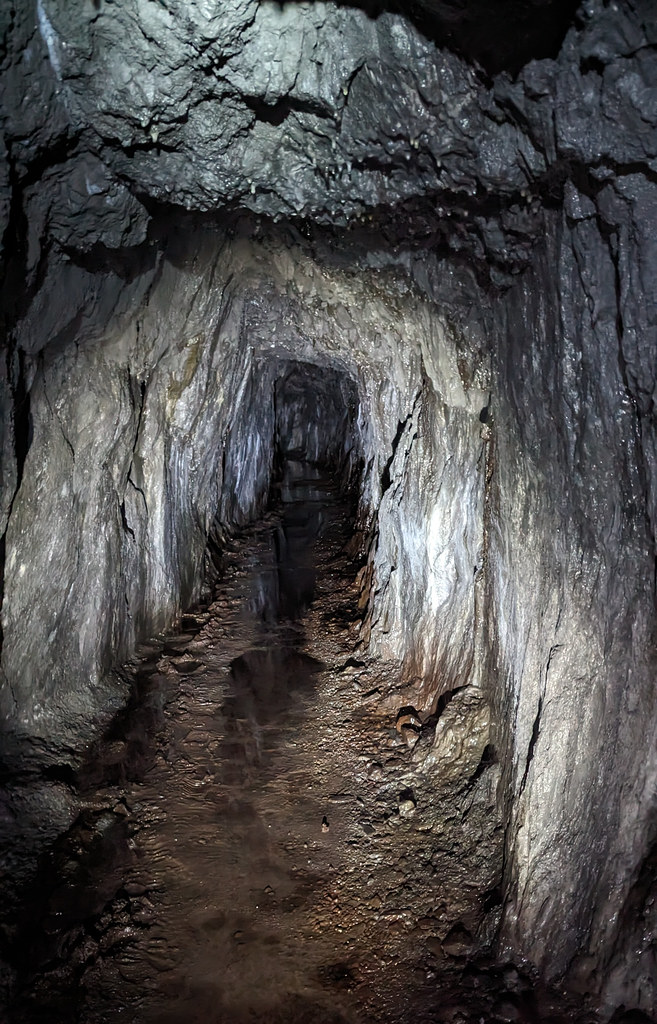
Before it ends in a dead end and it’s time to turn around:
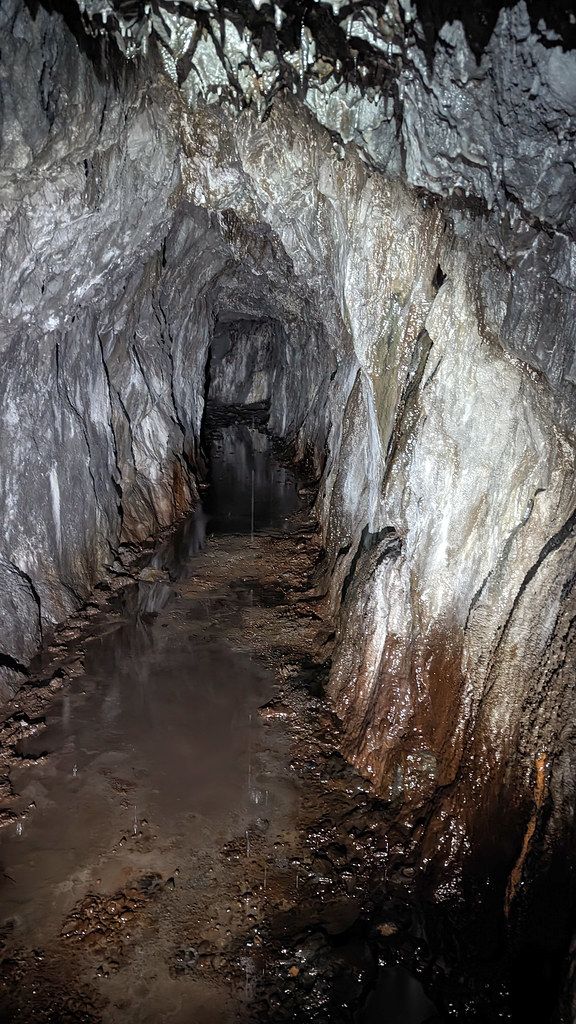
Retracing our steps:
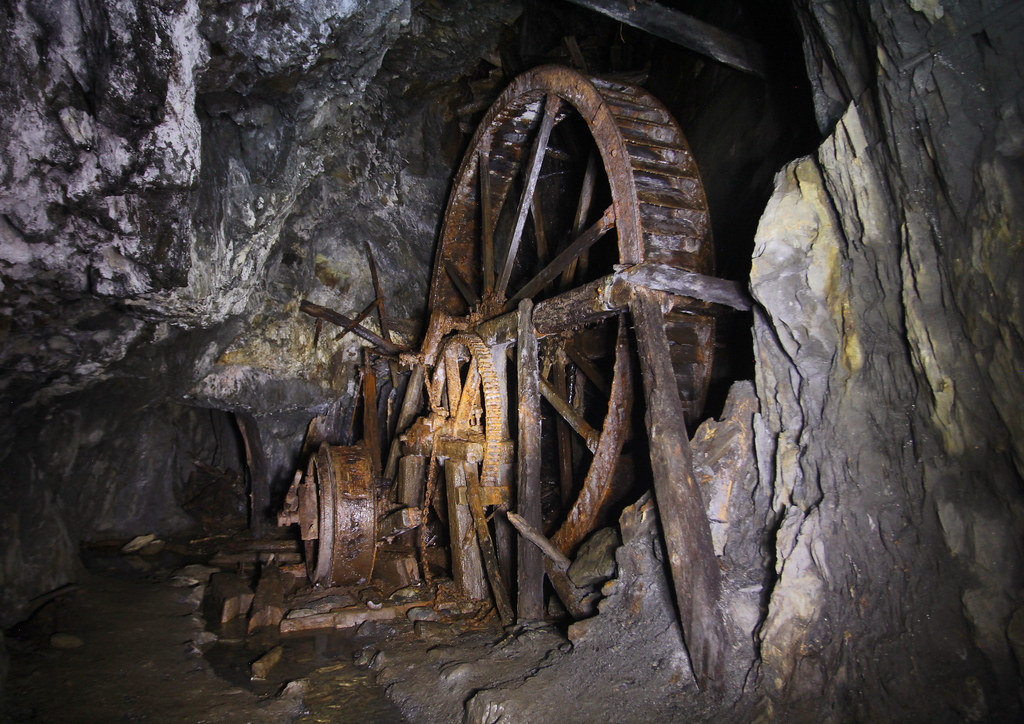
Back to this wonderful thing:
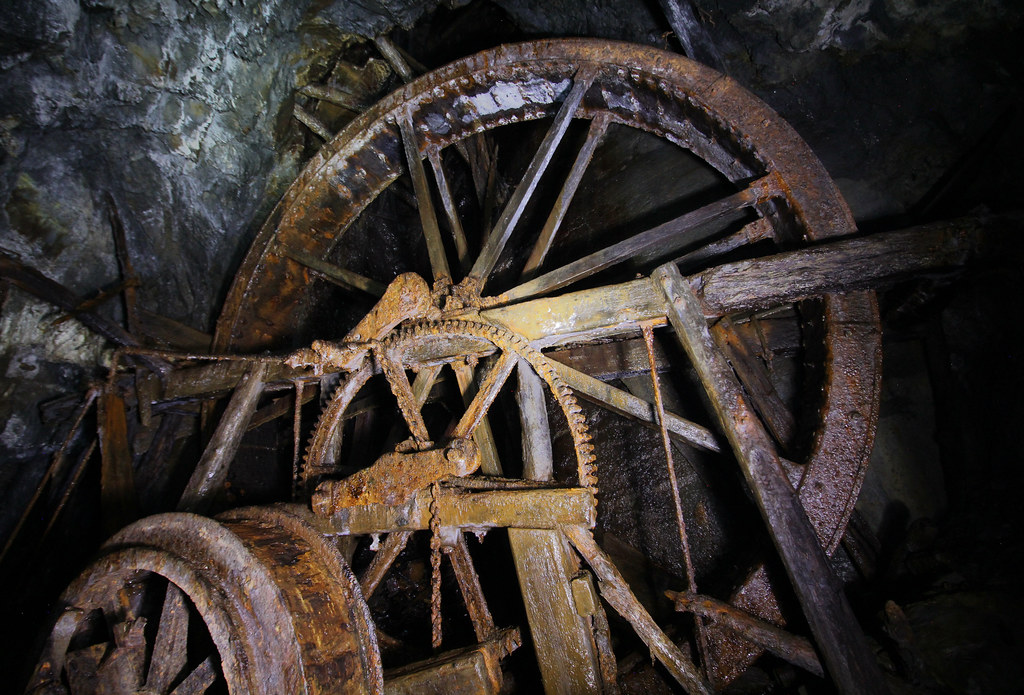
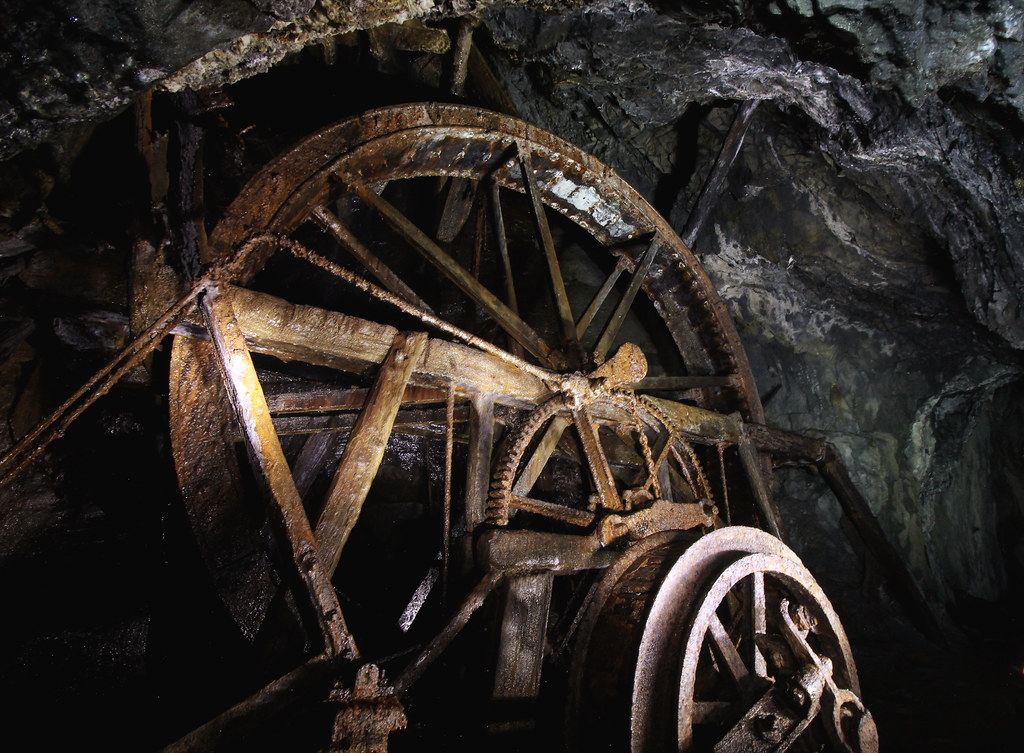
Impressive wall of neatly stacked deads:
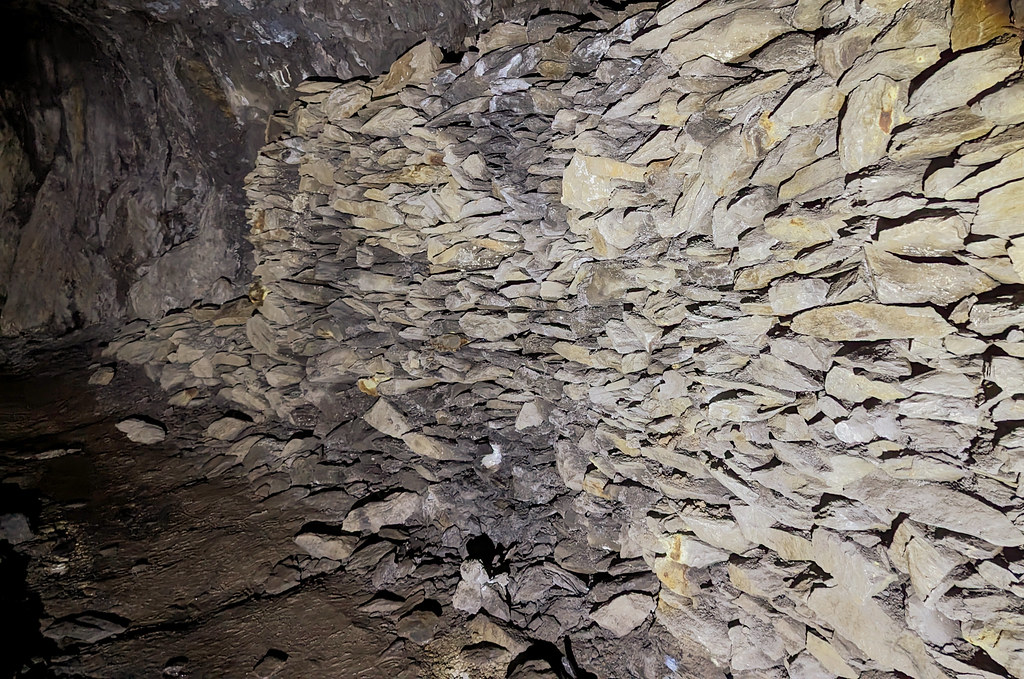
It’s bridge time!
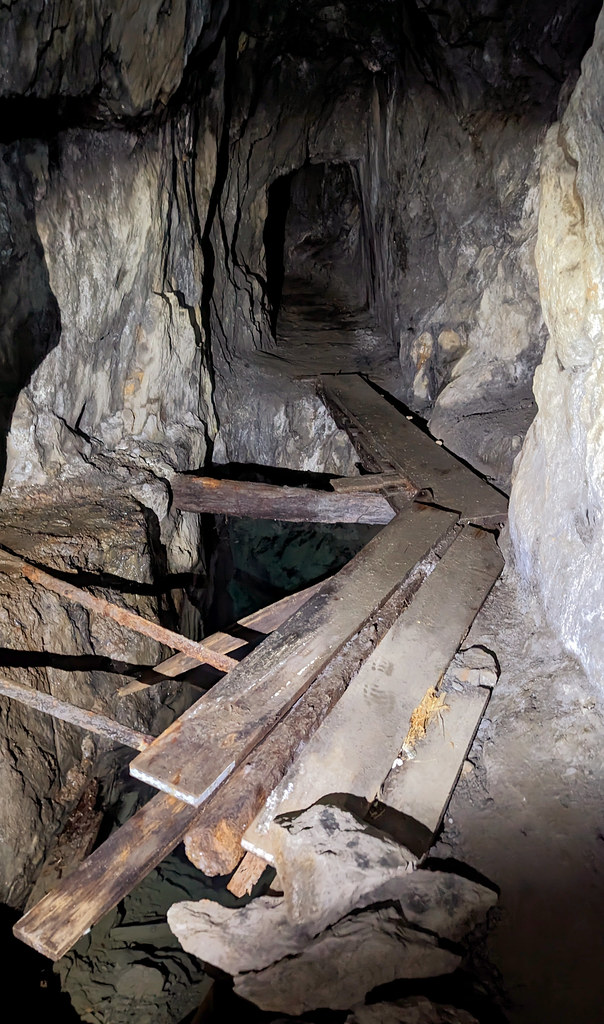
This stopping is cool:
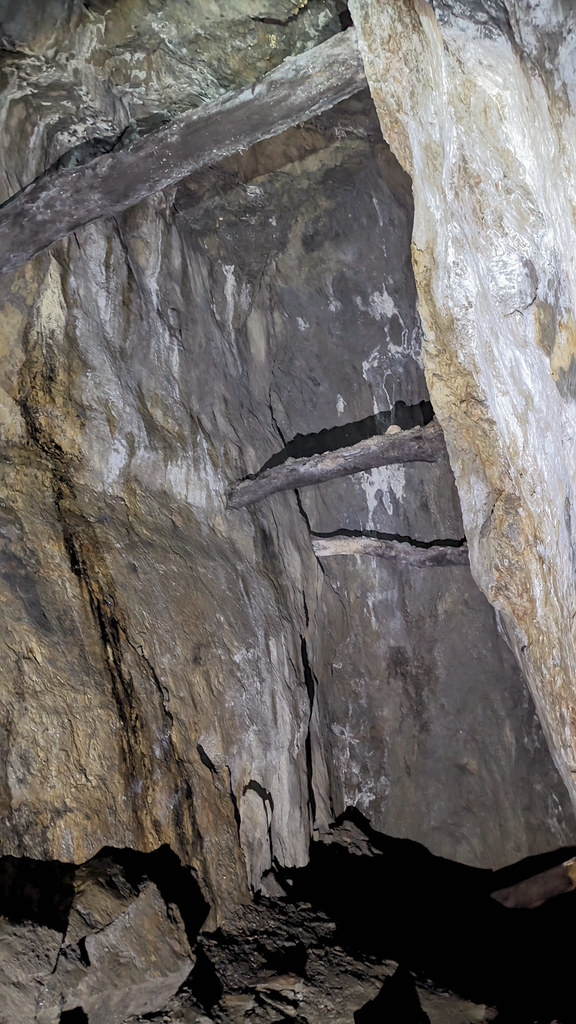

Ystrad Einion is a former lead-silver, zinc and copper mine, located 8 miles south/south-west of Machynlleth in the heart of Cwm Einion. Mining has taken place here since the 18th century. First worked in 1700 and again between 1745-60, the main period of activity was from 1851 when Lancastrian entrepreneur Adam Mason leased the land from the Pryses of Gogerddan, investing in over £3,000 in modern mining equipment. Records from 1891, make reference to 11 miners working at the site, 9 men labouring underground and 2 lads, aged between 13 and 18 above ground. It was an unprofitable mine, with the mine produced 5 tons of silver bearing lead (at a value of £37), 10 tons of zinc ore (£15) and 5 tons of copper ore (£7). Inevitably, the mine closed in 1903 and much of the machinery sold or scrapped.
Water was the main source of power using a leat running off from the River Einion 2km up stream. The wheel pits for three waterwheels survive, one wheel powered the pumps and winding drum at the main shaft head, another powered the stone breaker and crusher machinery in the crusher house, where lumps of ore bearing rock were reduced to a manageable size, and the third powered the jiggers and buddles which sorted and separated the metal ore. Other features of the site included waste tips, two stone ore bins, a blacksmiths shop, an ore store, an elaborate system of settling troughs and ponds to purify the poisonous wastewater, a gunpowder magazine set away from the other buildings and a series of tramways together with an incline that transported ore, waste and other materials around the site.
Below ground, there are four levels of workings, all accessed through adits cut in the hillside and linked by a number of shafts. A waterwheel which operated drainage pumps and a winding drum survives below ground.
Extract from a 1900 O/S map:

2. The Explore
Ever since seeing the picture of the legendary water wheel, I’ve wanted to visit this place. So when we ended up staying just up the road from here in Machynlleth, coming here was a no-brainer.
The workings are easily spotted due to the extensive above-ground remains. I didn’t have a definitive pin for the entrance so spent a little time looking for the adit. Once found and having ascertained it was below welly height, I ditched my waders and in I went. After the initial drive, you soon come to the water-wheel, It is a bit surreal. It really is one of the most amazing things I’ve seen down a mine. After that it was off to the right. Passed on the rope that takes you up a level and to the famous kibble. I then retraced my steps and went down the left hand drive, over makeshift pontoons, over a couple of collapses, ending up in a very wet engine shaft. At the far side a rope again took you up to the level up. After that, was back out and off to our rental cottage.
3. The Pictures
A few from the impressive above-ground remains first:

In we go:


Not sure what this is:

Is this a blocked-up adit:

On to the adit:

…and in we go:


Some copper in the left-hand-side wall:

This really does take some beating:




The pool of blue:


On we go:

Rope up a level to the kibble:


Pushing on:

Before it ends in a dead end and it’s time to turn around:

Retracing our steps:

Back to this wonderful thing:


Impressive wall of neatly stacked deads:

It’s bridge time!

This stopping is cool:






